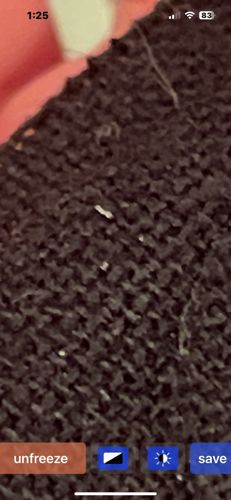Dust Mite
Scientific Name: Dermatophagoides spp.
Order & Family: Acariformes, Pyroglyphidae
Size: 0.2 to 0.3 mm (too small to be seen with the naked eye)

Natural Habitat
Indoor environments, particularly in bedding, upholstered furniture, carpets, and clothing where they feed on dead skin cells.
Diet & Feeding
Primarily feed on dead human and animal skin cells (dander).
Behavior Patterns
Dust mites thrive in warm, humid environments. They are microscopic and not visible to the naked eye. They reproduce quickly and their populations can grow significantly in favorable conditions. They do not bite or sting.
Risks & Benefits
Potential risks: A major cause of indoor allergies and asthma. Their feces and body fragments can trigger allergic reactions. Benefits: None directly to humans, though they play a role in decomposition of organic matter in their micro-environment.
Identified on: 10/26/2025